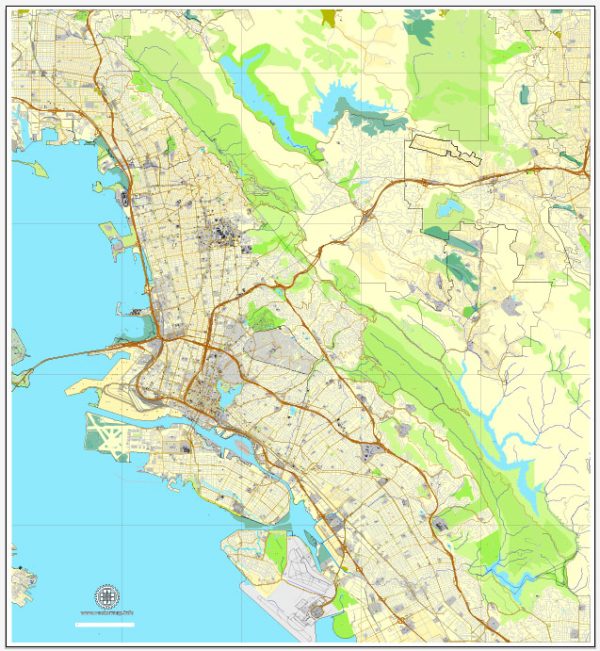The cities of Alameda, Oakland, and Berkeley are located in the San Francisco Bay Area in California, United States. Each of these cities has a distinct character and history, but they share common themes in urban development, reflecting the broader trends and challenges faced by many urban areas in the United States.
Alameda: Alameda is an island city located in the San Francisco Bay. It is known for its charming, tree-lined streets, historic architecture, and a small-town feel. Urban development in Alameda has focused on preserving the city’s historic character while accommodating some modernization and population growth. Alameda has a mix of residential neighborhoods, parks, and a vibrant downtown area. The city has faced challenges related to housing affordability and transportation, as residents seek to balance the preservation of the city’s unique character with the need for new development and infrastructure.
Oakland: Oakland is a diverse and dynamic city with a rich history, located just across the bay from San Francisco. Over the years, Oakland has experienced significant urban development, with a focus on revitalizing neighborhoods, expanding public transportation options, and encouraging economic growth. The city has a thriving arts and culture scene, a growing tech industry, and a commitment to sustainability. Oakland faces ongoing issues related to affordable housing, homelessness, and the need for equitable development to ensure that all residents benefit from the city’s growth.
Berkeley: Berkeley is known for its progressive values, academic institutions, and historic significance in the counterculture movement. Urban development in Berkeley has been marked by a commitment to environmental sustainability, inclusivity, and social justice. The city has invested in public transit, bike infrastructure, and green spaces, and it has implemented policies to promote affordable housing and reduce greenhouse gas emissions. Berkeley’s development challenges include balancing the preservation of its unique character with the need for increased housing density and addressing homelessness.
These cities are all part of the San Francisco Bay Area, which has experienced significant population growth, rising housing costs, and transportation challenges in recent years. Urban development efforts in the region aim to address these issues while preserving the cultural and historical identities of each city. They are also working on improving public transportation, expanding green spaces, and fostering vibrant, inclusive communities. Additionally, the cities have been dealing with various social and economic issues, including homelessness and income inequality, which are central to their urban development agendas.


 Author: Kirill Shrayber, Ph.D.
Author: Kirill Shrayber, Ph.D.